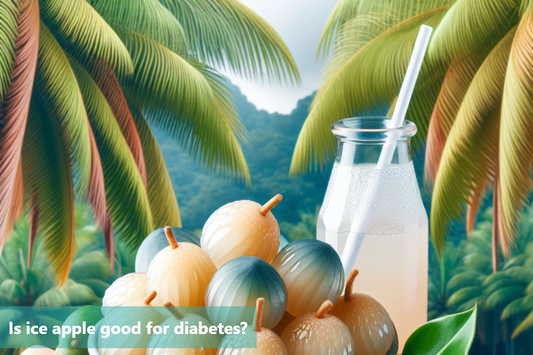Potatoes can be part of a diabetic diet when consumed moderately and prepared healthily. They offer fiber, vitamins, and minerals beneficial for diabetes management. Understanding their impact on blood sugar levels is crucial. Control portions and opt for healthier cooking methods like baking or boiling. The glycemic index of potatoes varies based on type and preparation, affecting blood sugar levels. Explore the nutritional benefits, blood sugar impact, and tips for including potatoes in a balanced diabetic diet.
Nutritional Benefits of Potatoes
Benefits of Potatoes for Diabetic Diet:
-
Good Source of Carbohydrates: Potatoes provide energy for daily activities, essential for managing blood sugar levels effectively.
-
Rich in Dietary Fiber: Aids in digestion, helps maintain steady blood sugar levels, and contributes to a feeling of fullness, assisting in weight management.
-
Packed with Essential Nutrients: Potatoes contain vitamin C, potassium, and B vitamins vital for immune support, muscle function, and overall well-being.
While potatoes offer numerous benefits for a diabetic diet, moderation and portion control are key. Consult with a healthcare provider or dietitian for personalized guidance on incorporating potatoes into a diabetes-friendly meal plan.
Nutritional Content per 1 Medium-Sized Baked Potato (173g)
|
Nutrient |
Amount |
|---|---|
|
Calories |
161 kcal |
|
Carbohydrates |
36.6 g |
|
Protein |
4.3 g |
|
Fat |
0.2 g |
|
Dietary Fiber |
3.8 g |
|
Sugars |
1.7 g |
|
Calcium |
20 mg |
|
Iron |
1.9 mg |
|
Magnesium |
48 mg |
|
Phosphorus |
121 mg |
|
Potassium |
926 mg |
|
Sodium |
17 mg |
|
Zinc |
0.6 mg |
|
Vitamin C |
22 mg (37% DV) |
Effects of Potatoes on Blood Sugar Levels
-
Glycemic Index Impact: Potatoes, a controversial staple in diabetic diets, can cause significant spikes in blood sugar levels due to their high glycemic index. When consumed, the carbohydrates in potatoes are quickly broken down into glucose, leading to rapid increases in blood sugar levels.
-
Type and Preparation Matters: Choosing sweet potatoes over white potatoes can be a better option for individuals with diabetes, as sweet potatoes have a lower glycemic index. Moreover, opting for boiled or roasted potatoes instead of fried ones can help mitigate the impact on blood sugar levels.
-
Combination with Other Foods: Pairing potatoes with foods rich in fiber, protein, and healthy fats can slow down the absorption of glucose, thereby preventing sudden spikes in blood sugar levels. This highlights the importance of balancing potato consumption with other nutrient-rich foods.
-
Portion Control and Overall Intake: Monitoring portion sizes and being mindful of overall carbohydrate intake are essential when incorporating potatoes into a diabetic diet. Careful planning and moderation are key to successfully integrating potatoes into a balanced diabetic meal plan. It's crucial to make informed choices and manage portions effectively to maintain stable blood sugar levels.
Impact of Different Cooking Methods on Potatoes and Diabetes
Various cooking methods can affect the glycemic index of potatoes, which in turn may impact their effect on diabetes. It is essential to understand how these cooking techniques could influence blood sugar levels in individuals with diabetes.
Here are some common cooking methods and their potential impact on the glycemic index of potatoes:
-
Boiling: Boiling potatoes can lead to a lower glycemic index compared to other cooking methods. This means that boiled potatoes may have a less significant effect on blood sugar levels in individuals with diabetes.
-
Baking: Baking potatoes at a moderate temperature can help maintain their nutritional content and keep the glycemic index relatively low, making them a better option for diabetes management.
-
Steaming: Steaming potatoes is another healthy cooking method that can help preserve their nutrients while keeping the glycemic index under control.
-
Frying: Frying potatoes in oil can significantly raise the glycemic index, making them less suitable for individuals with diabetes.
In conclusion, choosing the right cooking method for potatoes can make a difference in managing blood sugar levels for individuals with diabetes. Making informed choices when preparing potatoes can contribute to better overall health outcomes.
Ways to Incorporate Potato in your Diet
1. Baked Potatoes:
For a healthy diabetic meal plan, try baking potatoes instead of frying them. Baking helps retain the nutrients and reduces the amount of added fat in the dish.
2. Mashed Potatoes:
To add potatoes to a diabetic-friendly meal, consider using low-fat milk or yogurt for mashing instead of butter and cream. This lower-fat alternative can still provide a creamy texture with fewer calories.
3. Roasted Potatoes:
Roasting potatoes with a sprinkle of herbs or spices can enhance their flavor without the need for excessive oil or butter. This cooking method helps maintain the natural sweetness of the potatoes while keeping them crispy on the outside.
4. Potato Salad with Vinaigrette:
Instead of mayo-laden potato salads, opt for a lighter version with a tangy vinaigrette dressing. This reduces the overall calorie and fat content while still offering a tasty and satisfying side dish.
5. Sweet Potato Fries:
For a healthier alternative to traditional fries, consider making sweet potato fries. Baked in the oven with a touch of olive oil, these fries provide a boost of fiber and vitamins without the excessive calories and unhealthy fats.
-
Healthy Cooking Methods: Choose baking, boiling, or roasting over frying to maintain the nutritional value and avoid excess fat and calories.
-
Balanced Combinations: Pair smaller portions of potatoes with fiber-rich foods like vegetables, lean protein, and whole grains to regulate blood sugar levels effectively and promote satiety.
-
Opt for Sweet Potatoes: Substitute regular potatoes with sweet potatoes to benefit from lower glycemic index, which helps in preventing blood sugar spikes and providing sustained energy.
-
Diverse Meal Options: Incorporate potatoes into soups, salads, or casseroles with other nutrient-dense ingredients to add variety while maintaining a balance of carbohydrates, proteins, and fats.
-
Moderation and Portion Control: Remember to practice moderation and portion control when including potatoes in a diabetic meal plan to enjoy their nutritional benefits without compromising blood sugar levels.
Bottom line:
Potatoes are a debated topic in diabetic diets. Despite their high carbs, they can be beneficial if consumed wisely. Fiber in potatoes slows digestion, managing blood sugar levels. Prepare them healthily by baking or boiling, not frying. Pair with protein and non-starchy veggies for stability. Moderation and mindful prep are key. In diabetic diets, potatoes, when cooked well, offer nutrients without harmful spikes in glucose. To include them, make informed choices and monitor portions carefully.
Confused if a product is Diabetic friendly or not? DiabeSmart is the first Food product range exclusively designed for Diabetics. Clinically tested and great tasting; so your food habits don't need to change.
This Blog post is an initiative by DiabeSmart, to provide accurate and Nutritionist / Doctor approved information related to Diabetes. DiabeSmart is India's first Food brand designed specifically for Diabetics, that has been clinically tested on Diabetics and Pre-Diabetics to deliver 55% - 70% lower Sugar spikes. DiabeSmart is part of Lo! Foods - India's leading brand for Everyday Functional Health foods.















